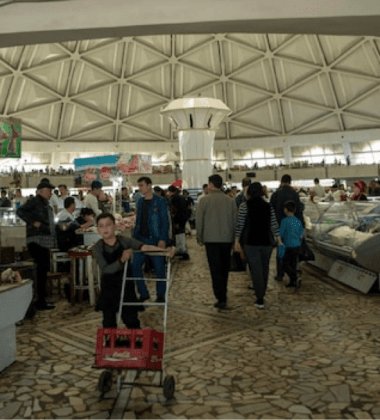As food expos become more competitive and immersive, brands are moving beyond static displays and glossy packaging. Instead, they’re embracing hands-on science-backed activations that draw visitors into the sensory and cognitive processes behind the food we eat. At the core of these experiences lies a growing trend: the food labeling activity—an interactive, educational format that’s turning taste into engagement and branding into trust.
At this year’s Food and Beverage Expo USA, held from June 26–28, 2025, at the New Jersey Expo Center, expect to see more booths using scientific demonstrations not just to impress, but to inform. From taste perception labs to ingredient decoding stations, the most effective exhibitors are using food labeling activities as an experiential marketing tool that boosts booth traffic, builds trust with buyers, and increases post-event conversions.
In this guide, we’ll explore how scientific demos, including food labeling challenges, tasting experiments, and ingredient traceability labs, are reshaping expo floor strategy—and how your team can incorporate these high-impact elements into your trade show execution.
Why Food Labeling Activities Work
At a time when consumer skepticism is at an all-time high, transparency sells. Today’s buyers—whether they’re retail chains, importers, or direct consumers—expect to understand what’s in a product, where it comes from, and how it was made.
A food labeling activity creates a direct, memorable interaction with this information. When visitors actively engage with an ingredient list, allergen warning, or sustainability claim—rather than simply reading it—they’re far more likely to retain that information and associate it with your brand.
These activities serve multiple purposes:
- Educate: Clarify the difference between claims like “natural,” “organic,” “non-GMO,” or “low sodium.”
- Engage: Turn passive attendees into participants through labeling games, matching activities, or mystery ingredient tests.
- Build trust: Demonstrate transparency in sourcing, nutrition, and manufacturing practices.
- Drive sales: Strengthen the buyer’s perception of your product as trustworthy and compliant with global standards.
Examples of High-Impact Labeling Activities at the Expo
1. Blind Taste and Label Challenge
At this interactive station, attendees taste unlabeled samples and attempt to match them with nutrition facts panels. Once revealed, the activity sparks dialogue around ingredient accuracy, additive content, or natural flavoring versus artificial ones.
What it achieves:
- Highlights the clarity (or confusion) caused by modern food labels.
- Creates a moment of surprise that reinforces product integrity if the label is favorable.
- Opens the door to deeper discussions with product developers or compliance experts on-site.
2. Build-a-Label Workshop
Give attendees a product prototype and let them construct the label based on real ingredients. Provide educational tools like:
- USDA and FDA compliance guides
- Allergen declaration rules
- International label comparison charts
Why it’s effective:
This gives buyers and media professionals insight into your transparency efforts and regulatory knowledge. It also turns your booth into a hands-on learning hub.
3. Ingredient Sourcing Storyboards
Create an interactive digital or physical map showing where each key ingredient is sourced, from farm to processing to final formulation. Add QR codes that link to farmer videos, certification documents, or soil data.
Results:
This brings life to your supply chain story and shows commitment to traceability, sustainability, and ethical sourcing—all of which are now key decision drivers in food retail and export.
The Science Behind the Engagement
Modern food labeling activities tap into more than regulatory compliance—they also lean into cognitive science and marketing psychology. Here’s how:
- Cognitive Recall: Hands-on learning (e.g., placing labels, identifying ingredients, participating in blind tastings) improves memory retention. This increases post-expo brand recall.
- Trust Building: Interactive activities show that a brand has nothing to hide. Label transparency during tastings reduces perceived risk and boosts consumer trust.
- Multi-sensory Marketing: By combining taste, sight, and touch, food labeling activities engage multiple senses, making the brand message more persuasive.
How to Design a Labeling Activation for Your Booth
Ready to bring a food labeling activity to your next expo appearance? Here’s how to design one that stands out:
Step 1: Choose the Right Focus
Decide what you want attendees to understand. Some popular angles include:
- Nutrition education
- Ingredient sourcing transparency
- Allergen or additive awareness
- Label decoding across markets (e.g., EU vs. US)
Step 2: Select the Activation Format
- Game-based: Quizzes, match-the-claim, label maze
- Tasting-based: Blind sample matching, flavor decoding
- Workshop-based: DIY label builder, compliance challenge
- Tech-based: Interactive tablets, touchscreens, or AR overlays showing label evolution
Step 3: Align with Compliance and Claims
Consult your regulatory team before finalizing the messaging. Activities involving health claims, organic certifications, or allergen labeling should reflect actual regulatory guidelines for each target market.
Step 4: Include a Takeaway
Offer printed or digital resources attendees can take with them:
- Label comparison guides
- Ingredient glossary
- QR code linked to a deeper educational hub or product spec sheet
Food Labeling as a Differentiator
While packaging design and flavor still matter, labeling has become one of the most scrutinized aspects of a product. For international buyers, health-conscious retailers, and export managers, a food’s label can make or break a deal.
That’s why a food labeling activity isn’t just a gimmick—it’s a core engagement tool that meets visitors exactly where their concerns lie. Whether your booth’s goal is to generate leads, launch a new product, or boost brand visibility, transparent and interactive labeling activities can give your brand a strategic edge.
Integrating Labeling with Broader Expo Strategy
Consider how food labeling activities can work in tandem with other booth elements:
- Pair a flavor sampling station with a label comparison board.
- Add a live compliance Q&A with your regulatory officer.
- Use a printed handout to drive post-show digital engagement, offering access to your online label creation tool or sourcing database.
And don’t forget to measure:
- Time spent per visitor at the activation
- Questions asked
- Brochure downloads or QR code scans
- Follow-up meeting requests driven by the activity
These metrics are often stronger indicators of engagement quality than sheer foot traffic.
Final Thoughts: The Future of Expo Engagement Is Interactive
As food regulations evolve and global transparency becomes standard, buyers are demanding more than bold flavors—they want clean labels, traceable sourcing, and accurate claims. By designing an engaging food labeling activity, your brand can rise above static displays and show—not just tell—how seriously you take compliance and communication.
At the Food and Beverage Expo USA, the booths generating the most buzz will be the ones transforming education into interaction. And nowhere is that more impactful than in the world of labels, claims, and compliance.
If your brand is ready to turn product transparency into expo performance, now’s the time to make your labeling strategy part of your activation blueprint.
https://visitors.globalproductsexpo.com/





